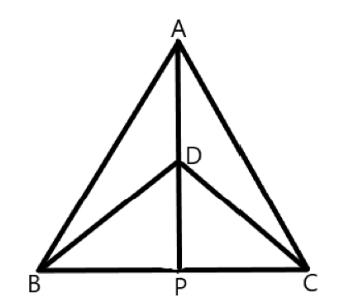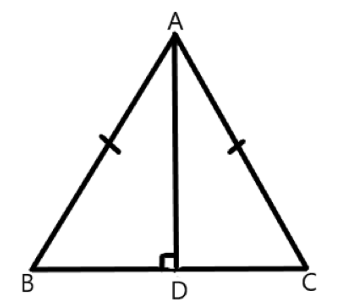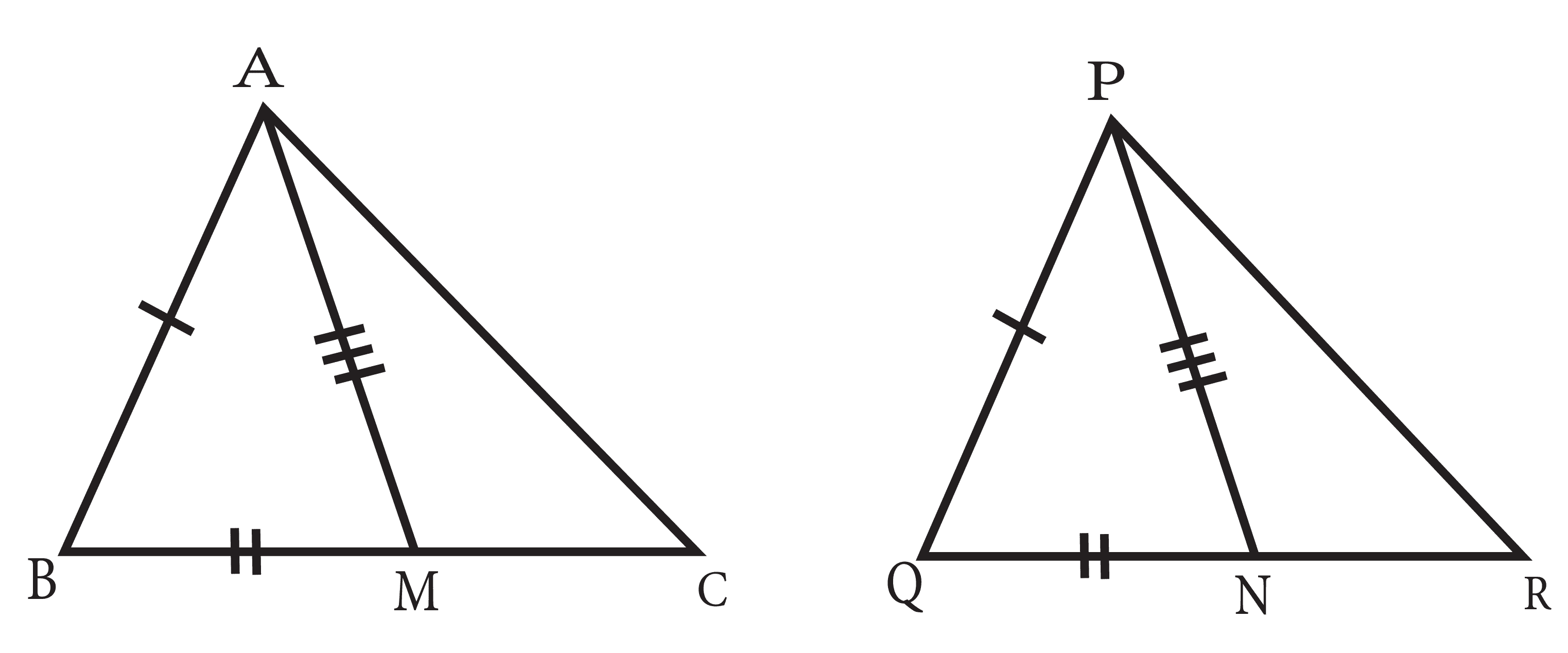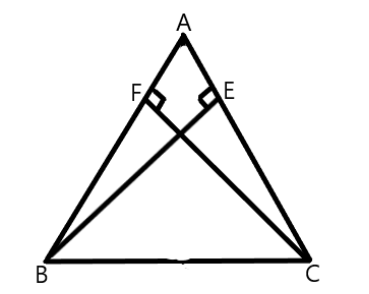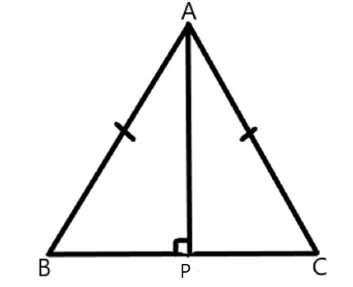Class 9 Triangles Exercise 7.3 Solutions for Exam Success
NCERT Solutions for Class 9 Maths Chapter 7 Triangles
FAQs on NCERT Solutions for Class 9 Maths Chapter 7 Triangles
1. What are NCERT Solutions for Class 9 Maths Chapter 7 Triangles Ex 7.3, and why are they important as per the 2025–26 CBSE syllabus?
NCERT Solutions for Class 9 Maths Chapter 7 Triangles Exercise 7.3 provide step-by-step answers to questions on triangle properties and congruence.
- They are aligned with the CBSE 2025–26 syllabus
- Help students master theorems such as SSS, SAS, and RHS congruence rules
- Strengthen understanding through structured, exam-focused solutions
- Facilitate concept clarity for all exercise-based questions in Chapter 7.3
2. How do NCERT Solutions for Class 9 Maths Chapter 7 Ex 7.3 approach questions on triangle congruence?
These solutions apply congruence criteria (like SSS, SAS, RHS) directly to each problem.
- Each answer is structured to match required congruence steps
- Both reasoning and calculation parts are clearly shown
- All justifications cite the correct congruence rule
- Both statement and reason methodology is followed as per CBSE guidelines
3. Why is mastering triangle inequalities and congruence crucial for Class 9 CBSE exams?
Mastery of triangle inequalities and congruence criteria is crucial because:
- Many exam questions are directly based on congruence proofs and applications
- Future geometry problems (trigonometry, quadrilaterals, constructions) require a strong foundation in triangles
- Conceptual errors in this chapter can lead to mistakes across further maths topics
4. What is the difference between SSS and RHS congruence rules, and when should each be used in Ex 7.3 solutions?
SSS (Side-Side-Side) congruence applies when all three corresponding sides of two triangles are equal, regardless of angle. RHS (Right angle–Hypotenuse–Side) is used only in right-angled triangles where the hypotenuse and one side are equal.
- Use SSS for proofs without right angles
- Apply RHS when at least one triangle has a right angle
5. How do the NCERT Solutions for Class 9 Maths Chapter 7 Ex 7.3 aid in developing proof-writing skills?
Each solution includes structured statements and reasons, mirroring CBSE answer expectations.
- Improves logical progression from assumption to conclusion
- Builds skills for both formal exam proofs and competitive reasoning
- Encourages clear articulation of geometric relationships
6. How many questions are included in Exercise 7.3 of NCERT Class 9 Maths, and what topics do they cover as per CBSE 2025–26 pattern?
Exercise 7.3 contains a total of five main questions as per the official CBSE 2025–26 NCERT textbook. These questions assess:
- Application of triangle congruence criteria (SSS, SAS, RHS)
- Properties such as perpendicular bisectors, medians, and isosceles triangles
- Use of statements and reasons in mathematical proofs
7. What common mistakes should students avoid while solving NCERT Solutions for Class 9 Maths Chapter 7 Triangles?
- Mixing up congruence rules (e.g., using SSS when RHS is required)
- Omitting clear statements or reasons in proofs
- Missing equal parts (angles or sides) justified by CPCT (Corresponding Parts of Congruent Triangles)
- Assuming triangle properties without formal proof
8. How do NCERT Solutions help in understanding 'bisector' and 'median' concepts in triangles?
The solutions clarify that:
- A bisector divides an angle or a side into two equal parts
- A median connects a vertex to the midpoint of the opposite side
- Stepwise answers use diagram-based logic to explain bisectors' or medians' properties and roles in triangle congruence
9. What are the key properties of triangles emphasized in Class 9 Maths NCERT Solutions Chapter 7.3?
- Sum of all angles in a triangle is 180°
- Sum of lengths of any two sides always exceeds the third side
- Base angles of isosceles triangles are equal
- Exterior angle of a triangle equals the sum of two opposite interior angles
- CPCT is routinely applied when proving triangle congruence
10. How are NCERT Solutions for Class 9 Maths Chapter 7 Triangles Ex 7.3 different from revision notes or important questions?
Unlike revision notes or important questions, NCERT Solutions provide full, stepwise answers to every exercise question in the textbook.
- They do not skip intermediate steps
- Follow the latest CBSE format for explanations
- Target comprehensive understanding, not just memory or exam strategy
11. What if a triangle has two equal altitudes—how do NCERT Solutions prove it is isosceles?
The solutions use the RHS congruence rule to show that the triangles formed by each altitude have:
- One right angle (from altitude)
- Equal base segments
- Equal altitudes
Thus, the sides opposite the equal angles are proved equal, showing the triangle is isosceles.
12. How does understanding triangle congruence from Chapter 7 prepare students for higher-level geometry?
Triangle congruence underpins much of higher-level geometry. It is foundational for quadrilaterals, circles, similarity, and trigonometry topics covered in later classes and competitive exams. Thorough understanding in Class 9 ensures students can build on these concepts with confidence in Class 10 and beyond.
13. What steps should be followed to write a complete proof in Class 9 Maths Chapter 7 as per CBSE pattern?
To write a full proof:
- List 'Given' and 'To Prove' statements
- Draw a labelled diagram if required
- Clearly justify each step with correct theorems or congruence criteria
- State the conclusion referencing the rule (e.g., SSS, RHS, CPCT)
14. Why do students often confuse 'median', 'altitude', and 'angle bisector'? How are they distinctly treated in Exercise 7.3?
Confusion arises because all three connect a vertex to the opposite side but have different definitions:
- Median – connects vertex to midpoint of opposite side
- Altitude – connects vertex perpendicularly to opposite side
- Angle bisector – divides angle into equal parts
- NCERT Solutions clarify these through labelled diagrams and precise statements in solutions
15. How does solving all NCERT Solutions for Chapter 7 help in scoring higher in CBSE Class 9 Maths exam?
Solving all chapter-wise NCERT Solutions ensures full coverage of the CBSE syllabus, familiarizes students with frequent proof patterns, and builds confidence for both short and long answer types. This systematic practice is proven to improve exam performance and overall mathematical reasoning.




















 Watch Video
Watch Video





